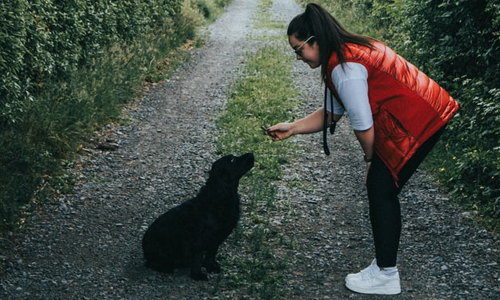Bring Style and Comfort This Spring with Functional Vest
Author

Chris shares his passion for cycling, hiking, skiing, and climbing from Buxton, in the Peak District. As a blogger for Outdoor Look, Chris shares outdoor tips and indoor tricks to help you get the most out of your time spent outside. When he's not out adventuring he's making videos or trying to keep up with his 4-year-old son.
Spring is the season of change and in most of the world, it is necessarily the little time phase where the snow starts to melt and flower starts to blossom with quick shifts in weather. However, this is not all that spring has to offer, there is also a dramatic side to it.
A spring week might bring you a lot of elements than you expect to get in a single day. It might start with a rainy morning with sunny afternoons and sudden blizzards to wrap up the day. So, finding the right vest to compliment your spring wardrobe is no joke. Here is the guide to help you out find the right piece for your colourful spring couture.

Outer Fabric
Also known as the face fabric, it is the material that covers the outside of the vest. The face fabric is the outer cover that faces the elements, like wind, rain, snow, etc. It also protects your body against the wet and cold. Understanding the importance of face fabric is essential in picking up the right jacket.
There are a variety of options available for outer materials like cotton, wool, and leather. The most common of them is cotton that comes as no surprise. Cotton is the most versatile of them all but there is also a downside to it. The moisture-wicking capability of cotton is sub-par and loses its insulating properties when they get wet.
When it comes to wool, the particular kind, merino wool has natural moisture-wicking fabric and is also lighter than cotton. In springtime, a thin wool vest or overcoat can help you tread the dynamics of weather changes without looking too packed up.
Factor of Insulation
The function of insulation is self-explanatory and is the most effective way to provide warmth to the body. The process involves trapping air next to the skin and warming it through the heat of the body. Most traditional fabric involves down or fleece which is nothing but different ways to suspend air as close to the body as possible. However, a spring jacket might not include a sewn-in layer of insulation. In case the temperature drops, layer the vest with a light sweater underneath to feel stylish and comfortable in the unpredictable environment.
You will find various materials that are used for insulation in vests and jackets like non-down quilting, down, cotton-poly fleece, polyester microfleece, synthetic loft, and high-pile fleece. All these fabrics give different types of benefits to the wearer with qualities like breathability, light weight, and insulation.

Factor of Weatherproofing
There is only one name that pops up in mind when it comes to weatherproofing jackets and vets. It is Gore-Tex, which is more than just expensive but a ground-breaking fabric, that is micro porous, breathable, and of course, waterproof. Most of the Gore-Tex fabrics make up for outer layer jackets during the cold winter months. The most innovative part of this fabric is its, polytetrafluoroethylene membrane. But, since the name is hard to remember, so it is commonly known as PTFE membranes.
Other Factors to Consider
Few other major factors to take care of when choosing your spring vest are fit and functionality like pockets and packability. While the fit is important as you want your vest to cover you snugly, pockets are useful to store things while running for quick errands. And lastly, there is packability that ensures you can carry it anywhere you like.
Author

Chris shares his passion for cycling, hiking, skiing, and climbing from Buxton, in the Peak District. As a blogger for Outdoor Look, Chris shares outdoor tips and indoor tricks to help you get the most out of your time spent outside. When he's not out adventuring he's making videos or trying to keep up with his 4-year-old son.
- Speed Up Your Post-Hike Recovery with These 6 Essential Tips
- Cycling through Tranquil Roads and Coastal Views on the Isle of Wight
- The Essential Guide to Hiking Safety: 5 Tips Every Hiker Should Know
- Run Smart, Run Strong: Your Guide to Injury-Free Running
- Embrace Biking: Essential Tips for Beginners
Categories
- Sport (28)
- Product Reviews (3)
- Team Outdoor Look (7)
- Mike Wild (2)
- Mike Payton (2)
- Suse Hammond-Pears (3)
- Snowboarding (12)
- Latest Offers (105)
- Shop Talk (1)
- Competitions (7)
- Walking (413)
- Lifestyle Fashion (8)
- Travel (86)
- Kit Guides (176)
- Workwear Clothing (6)
- Safety Workwear (4)
- Health/Fitness (289)
- Skiing (91)
- Great Outdoors (1316)
- Cycling (92)
- January 2025
- December 2024
- November 2024
- October 2024
- September 2024
- August 2024
- July 2024
- June 2024
- May 2024
- April 2024
- March 2024
- February 2024
- January 2024
- December 2023
- November 2023
- October 2023
- September 2023
- August 2023
- July 2023
- June 2023
- May 2023
- April 2023
- March 2023
- February 2023
- January 2023
- December 2022
- November 2022
- October 2022
- September 2022
- August 2022
- July 2022
- June 2022
- May 2022
- April 2022
- March 2022
- February 2022
- January 2022
- December 2021
- November 2021
- October 2021
- September 2021
- August 2021
- July 2021
- June 2021
- May 2021
- April 2021
- March 2021
- February 2021
- January 2021
- December 2020
- November 2020
- October 2020
- September 2020
- August 2020
- July 2020
- June 2020
- May 2020
- April 2020
- March 2020
- February 2020
- January 2020
- December 2019
- November 2019
- October 2019
- September 2019
- August 2019
- July 2019
- June 2019
- May 2019
- April 2019
- March 2019
- February 2019
- January 2019
- December 2018
- November 2018
- October 2018
- September 2018
- August 2018
- July 2018
- June 2018
- May 2018
- April 2018
- March 2018
- February 2018
- January 2018
- December 2017
- November 2017
- October 2017
- September 2017
- August 2017
- July 2017
- June 2017
- May 2017
- April 2017
- March 2017
- February 2017
- January 2017
- December 2016
- November 2016
- October 2016
- September 2016
- August 2016
- July 2016
- June 2016
- May 2016
- April 2016
- March 2016
- February 2016
- January 2016
- December 2015
- November 2015
- October 2015
- September 2015
- August 2015
- July 2015
- June 2015
- May 2015
- April 2015
- March 2015
- February 2015
- January 2015
- December 2014
- November 2014
- October 2014
- September 2014
- August 2014
- July 2014
- June 2014
- May 2014
- April 2014
- March 2014
- February 2014
- January 2014
- December 2013
- November 2013
- October 2013
- September 2013
- August 2013
- July 2013
- June 2013
- May 2013
- April 2013
- March 2013
- February 2013
- January 2013
- December 2012
- November 2012
- October 2012
- September 2012
- August 2012
- July 2012
- June 2012
- May 2012
- April 2012
- March 2012
- February 2012
- January 2012
- December 2011
- November 2011
- October 2011
- September 2011
- August 2011
- May 2010
- April 2010
- March 2010
- February 2010
- January 2010
- November 2009
- October 2009
- September 2009
Submit a Comment